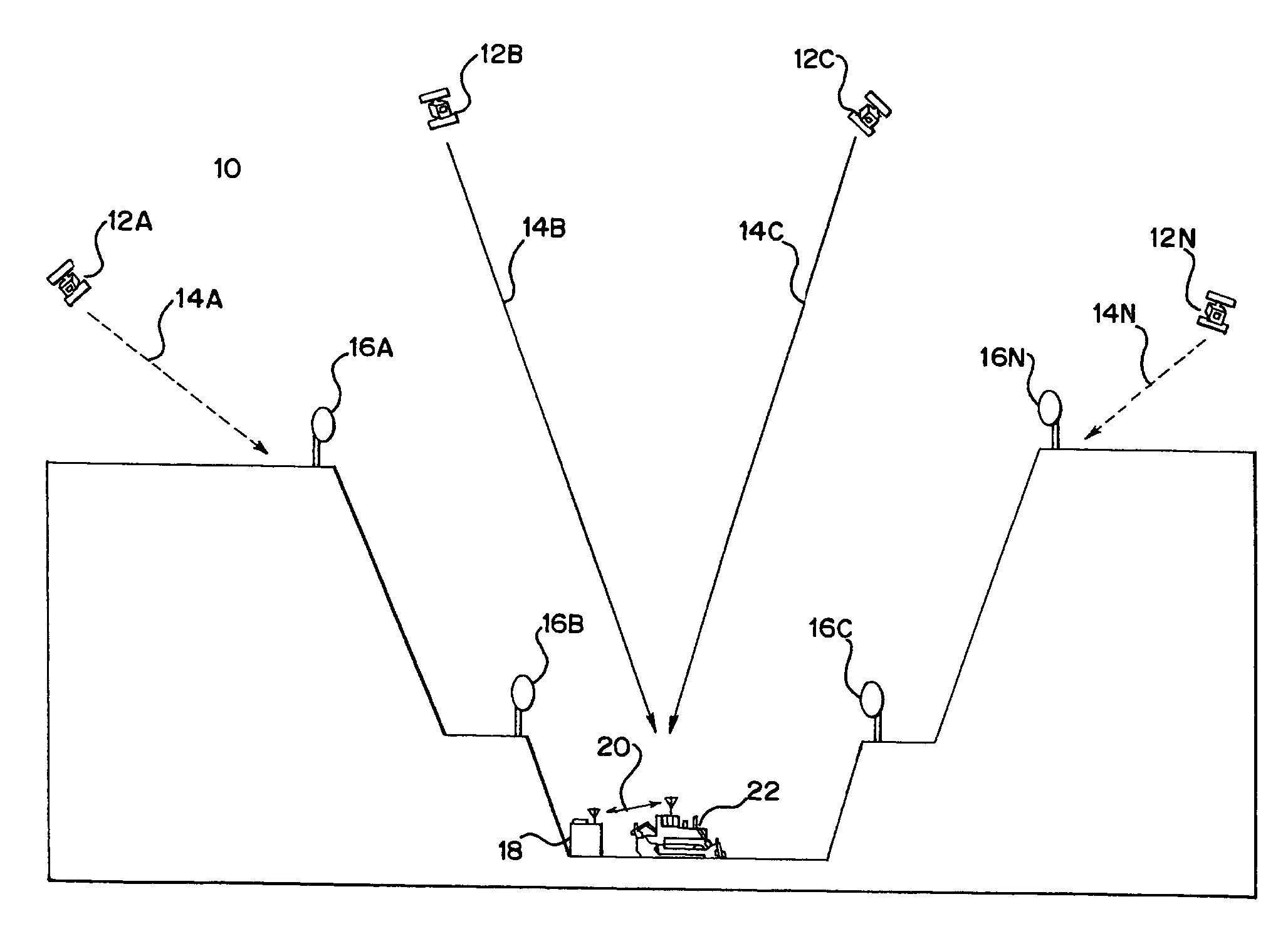Distributed radio frequency ranging signal receiver for navigation or position determination
- Summary
- Abstract
- Description
- Claims
- Application Information
AI Technical Summary
Benefits of technology
Problems solved by technology
Method used
Image
Examples
Embodiment Construction
[0037]GNSS relies on access to a plurality of satellites at any given location on the globe. For example, access to at least five satellites allows for position solution with carrier phase based centimeter accuracy. Some locations lack sufficient access to satellites. For example, FIG. 1 shows a system 10 with a plurality of satellites 12A-N relative to an open pit mine. A reference station 18 and mobile receiver 22 have lines of sight 14B, 14C to two satellites 12B, 12C but the walls of the mine block access to signals from other satellites 12A, 12N. In order to provide accurate positioning, a plurality of land-based transmitters 16A-N are positioned within, encircling, around, or combination thereof the mine.
[0038]The land-based transmitters 16, reference station 18 and / or mobile receiver 22 are a local positioning system. The local positioning system is operable without the satellites 12, but may be augmented with the satellites 12. Additional, different or fewer components may b...
PUM
 Login to View More
Login to View More Abstract
Description
Claims
Application Information
 Login to View More
Login to View More - R&D
- Intellectual Property
- Life Sciences
- Materials
- Tech Scout
- Unparalleled Data Quality
- Higher Quality Content
- 60% Fewer Hallucinations
Browse by: Latest US Patents, China's latest patents, Technical Efficacy Thesaurus, Application Domain, Technology Topic, Popular Technical Reports.
© 2025 PatSnap. All rights reserved.Legal|Privacy policy|Modern Slavery Act Transparency Statement|Sitemap|About US| Contact US: help@patsnap.com



